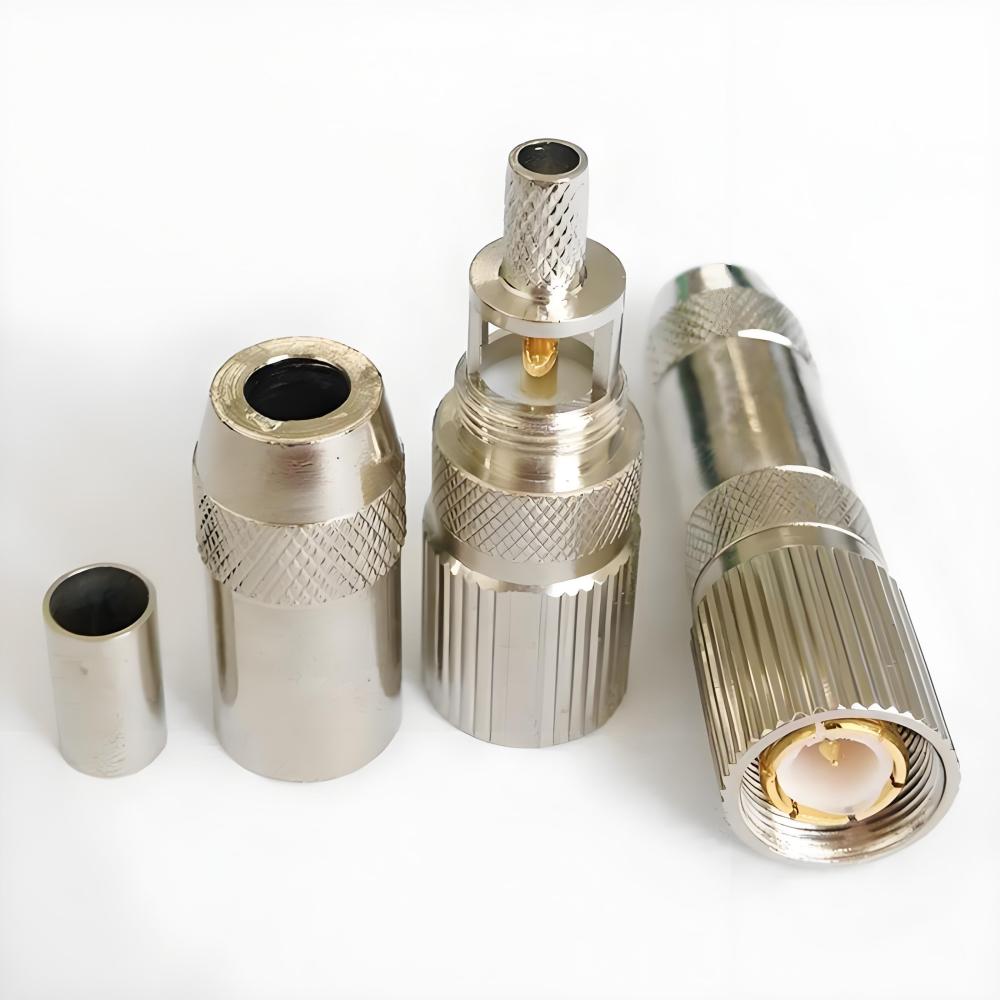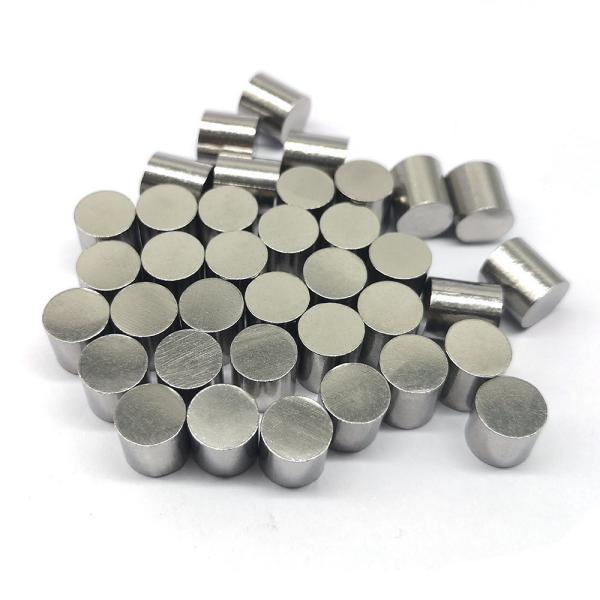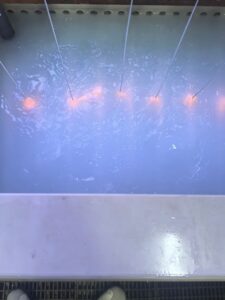Chrome moly steel, a versatile and robust alloy, has become a cornerstone in the machining industry due to its exceptional strength and durability. Known for its unique combination of chromium and molybdenum, this low-alloy steel offers a compelling balance of toughness, heat resistance, and machinability, making it a favorite across various industrial applications. From automotive components to oil and gas equipment, chrome moly steel’s properties enable it to withstand extreme conditions while maintaining structural integrity. This blog dives into the intricacies of chrome moly steel, exploring its composition, grades, applications, advantages, and welding techniques, providing valuable insights for professionals.
What Is Chrome Moly Steel?
Chrome moly steels, often referred to as chromium-molybdenum steel, is a low-alloy steel that combines iron with small percentages of chromium and molybdenum. These alloying elements enhance the material’s mechanical properties, making it stronger and more resistant to wear than standard carbon steel. The term “chrome moly” is derived from the two primary alloying elements: chromium, which boosts hardness and corrosion resistance, and molybdenum, which improves strength and heat resistance. Typically, the alloy contains between 0.5% to 9% chromium and 0.5% to 1% molybdenum, depending on the specific grade.
The alloy’s composition allows it to excel in environments where high strength and durability are critical. Its ability to be heat-treated further enhances its versatility, enabling manufacturers to tailor its properties for specific applications. It is often designated by standards such as AISI or ASTM , ensuring consistency in its chemical and mechanical properties. For machinists, understanding the composition of chrome moly steel is essential for selecting the right grade for a project.
Why Chrome Moly Steel Stands Out
What sets chrome moly steels apart from other alloys is its ability to balance strength, toughness, and workability. Unlike mild carbon steel, which may lack the necessary durability for high-stress applications, chrome moly steel offers superior tensile strength and fatigue resistance. Compared to stainless steel, it may not have the same level of corrosion resistance, but its cost-effectiveness and strength-to-weight ratio make it a preferred choice for many industrial uses. This unique combination of properties makes this steel a go-to material for industries requiring reliable performance under challenging conditions.
What Are the Chrome Moly Steel Grades?
Chrome moly steel is categorized into several grades, each designed for specific applications based on its chemical composition and mechanical properties. The most common grades fall under the AISI 41xx series, where the “41” indicates the presence of chromium and molybdenum, and the last two digits represent the carbon content. For example, AISI 4130 contains approximately 0.30% carbon, while AISI 4140 has about 0.40% carbon. These grades are widely used due to their excellent balance of strength, toughness, and machinability.
Popular Grades
- AISI 4130: Known for its high strength-to-weight ratio, this grade is commonly used in aerospace, automotive, and bicycle frame manufacturing. It offers good weldability and is often used for structural tubing and roll cages.
- AISI 4140: A versatile grade with higher carbon content, AISI 4140 is favored for its toughness and fatigue resistance. It’s widely used in oil and gas applications, such as drill rods and pump shafts, as well as in heavy machinery components.
- AISI 4340: This grade contains nickel in addition to chromium and molybdenum, providing exceptional strength and toughness. It’s often used for high-stress components like crankshafts and gears.
- ASTM A387 Grades (e.g., Grade 11, Grade 22): These grades are designed for high-temperature applications, such as pressure vessels and furnaces, due to their excellent heat resistance.
- P-Grades (e.g., P5, P9, P11, P22, P91): Commonly referred to as “P Grade” materials, these are used in high-pressure and high-temperature environments, such as power plants and refineries. P91, with 9% chromium and 1% molybdenum, is particularly suited for extreme conditions.
Each grade is tailored to meet specific performance requirements, and machinists must select the appropriate grade based on the project’s needs, considering factors like temperature, pressure, and environmental exposure.
Choosing the Right Grade
Selecting the right chrome moly steel grade involves understanding the application’s demands. For instance, AISI 4130 is ideal for lightweight structures, while AISI 4140 is better suited for heavy-duty components requiring high wear resistance. For high-temperature applications, grades like P91 or ASTM A387 Grade 22 are preferred due to their ability to maintain strength at elevated temperatures. Consulting material specifications and working with a trusted supplier ensures the chosen grade aligns with the project’s requirements.
What Is Chrome Moly Steel Used For?

It’s versatility makes it a staple in numerous industries. Its ability to withstand high stress, heat, and corrosion allows it to perform reliably in demanding environments. Below are some of the most common applications of chrome moly steel across various sectors.
Aerospace and Automotive Applications
In the aerospace industry, chrome moly steel is used to manufacture aircraft fuselages, landing gear, and jet engine components due to its high strength-to-weight ratio and thermomechanical properties. Similarly, in the automotive sector, it’s employed for crankshafts, clutch components, and roll cages in racecars. The alloy’s ability to reduce weight without compromising strength is particularly valuable in high-performance vehicles, where every ounce matters.
Oil and Gas Industry
The oil and gas industry relies heavily on chrome moly steel for equipment that operates under high pressure and corrosive conditions. Components like drill rods, pump shafts, wellhead components, valves, and flanges are often made from grades like AISI 4140 or P91. The alloy’s resistance to thermal fatigue and corrosion makes it ideal for offshore oil rigs, where exposure to saltwater and extreme weather is common.
Construction and Heavy Machinery
In construction, chrome moly steel is used for structural components that require high tensile strength and resistance to wear. It’s also a popular choice for heavy machinery parts, such as gears, shafts, and hydraulic systems, due to its durability and ability to handle heavy loads. The alloy’s impact resistance ensures that equipment can withstand the rigors of demanding construction environments.
Medical and Other Industries
Cobalt-chromium-molybdenum (Co-Cr-Mo) alloys, a specialized form of chrome moly steel, are used in the medical industry for surgical implants, such as hip and knee replacements, due to their biocompatibility and high fatigue life. Additionally, it is employed in energy production (e.g., power plant boilers), mold and tool manufacturing, and even bicycle frame production, showcasing its wide-ranging applicability.
Advantages and Disadvantages of Chrome Moly Steel
Like any material, chrome moly steel has its strengths and limitations. Understanding these can help machinists and engineers make informed decisions about its use in specific applications.
Advantages
- High Strength and Toughness: The combination of chromium and molybdenum provides exceptional tensile strength and toughness, making it ideal for high-stress applications.
- Heat Resistance: The alloy retains its strength at elevated temperatures, making it suitable for high-temperature environments like power plants and refineries.
- Corrosion Resistance: While not as corrosion-resistant as stainless steel, the chromium content offers moderate protection against oxidation and corrosion, particularly in saltwater environments.
- Hardenability: The alloy can be easily hardened through heat treatment or carburization, allowing for tailored mechanical properties.
- Cost-Effectiveness: Compared to materials like titanium or carbon fiber, it is more affordable while still offering high performance.
- Weldability and Machinability: When properly annealed, it is relatively easy to weld and machine, especially for thinner sections.
Disadvantages
- Limited Corrosion Resistance: While chromium improves corrosion resistance, it is not as resistant as stainless steel and may require additional coatings or maintenance in corrosive environments.
- Machining Challenges: In its hardened state, it can be difficult to machine due to its high strength and toughness, leading to rapid tool wear.
- Welding Precautions: Improper welding techniques or lack of pre- and post-weld heat treatment can lead to cracking, especially in thicker sections.
- Weight: While this steel has a high strength-to-weight ratio, it is heavier than materials like aluminum, which may be a drawback in weight-sensitive applications.
By weighing these pros and cons, manufacturers can determine whether chrome moly steel is the right choice for their projects and take steps to mitigate its limitations.
How to Weld Chrome Moly Steel?
Welding the alloy requires careful consideration to ensure strong, durable welds without compromising the material’s properties. The alloy’s high strength and sensitivity to thermal stress mean that specific techniques and precautions are necessary for successful welding.
Welding Techniques
- TIG Welding: Tungsten Inert Gas (TIG) welding is the preferred method for chrome moly steel due to its precision and clean results. It allows for better control over heat input, reducing the risk of cracking.
- MIG Welding: Metal Inert Gas (MIG) welding can also be used, but it’s less effective than TIG for chrome moly steel, as it may produce less consistent welds. TIG is generally faster and cleaner, making it the industry standard for this alloy.
- Preheating: For materials thicker than 3 mm, preheating to 400–600°F (200–315°C) is recommended to reduce thermal stress and prevent cracking. Thinner sections (less than 3 mm) typically don’t require preheating.
- Post-Weld Heat Treatment: After welding, a post-weld heat treatment (typically 600°F or higher) followed by slow cooling in still air or under a heat blanket helps relieve residual stresses and maintain the material’s integrity.
Best Practices for Welding
- Clean the Surface: Thoroughly clean the steel to remove dirt, oil, or oxides before welding to prevent weld imperfections.
- Control Cooling Rates: Slow cooling is critical to avoid cracking. Avoid rapid cooling methods, as they can introduce stresses into the weld.
- Use Appropriate Filler Materials: Select filler materials that match the chrome moly steel grade to ensure compatibility and maintain mechanical properties.
- Monitor Heat Input: Excessive heat can weaken the alloy, so maintaining consistent heat input is essential for high-quality welds.
By following these guidelines, machinists can achieve strong, reliable welds that preserve the strength and durability of chrome moly steel components.
Is Chrome Moly Steel Magnetic?
Yes, it is magnetic. As a low-alloy steel primarily composed of iron, it retains the ferromagnetic properties of its base metal. The addition of chromium and molybdenum does not significantly alter its magnetic characteristics. However, certain specialized variants, such as cobalt-chromium-molybdenum (Co-Cr-Mo) alloys used in medical implants, may exhibit reduced magnetism due to the presence of cobalt, which is non-magnetic.
For most industrial applications, the magnetic properties of chrome moly steel are not a primary concern. However, in industries like electronics or medical device manufacturing, where magnetic interference could be an issue, machinists should verify the alloy’s composition and consult with suppliers to ensure it meets specific requirements.
Does Chrome Moly Steel Rust?

Chrome moly steel has moderate corrosion resistance due to its chromium content, but it is not immune to rust. Unlike stainless steel, which contains higher levels of chromium (typically 10.5% or more), chrome moly steel’s chromium content (0.5% to 9%) provides some protection against oxidation and corrosion but is not sufficient to prevent rust in harsh environments, such as those with high humidity or saltwater exposure.
Factors Affecting Rust Formation
- Environmental Exposure: It is prone to rust in corrosive environments, such as coastal areas or chemical plants, unless protected with coatings or regular maintenance.
- Surface Treatment: Applying protective coatings, such as paint, galvanizing, or black oxide, can significantly reduce the risk of rust.
- Maintenance: Regular cleaning and inspection can help prevent rust formation, especially for components exposed to moisture or corrosive substances.
For applications requiring high corrosion resistance, stainless steel or other materials may be more suitable. However, with proper care and coatings, chrome moly steel can perform reliably in many environments.
Challenges in Machining Chrome Moly Steel
Machining chrome moly steel can be challenging due to its high strength and hardness, particularly in its hardened state. Tools may wear more quickly, and machinists must use sharp tools and low-vibration equipment to minimize work hardening. For optimal results, high-speed steel (HSS) tools can be used for softer, annealed chrome moly steel, while carbide tools are recommended for harder grades or high-volume production.
Tips for Machining Chrome Moly Steel
- Use Proper Tooling: Carbide inserts or cobalt drills are effective for cutting chrome moly steel, especially for harder grades like AISI 4140.
- Optimize Speeds and Feeds: Adjust cutting speeds and feeds to reduce heat generation and prevent tool wear. Flood cooling can help maintain a good surface finish.
- Annealing for Machinability: Annealing chrome moly steel before machining softens the material, making it easier to cut and shape.
By understanding the material’s properties and using the right techniques, machinists can overcome these challenges and produce high-quality components with chrome moly steel.
Precionn’s Expertise with Chrome Moly Steel
For companies seeking precision-machined components made from chrome moly steel, Precionn stands out as a trusted partner. With years of experience in the machining industry, Precionn specializes in working with high-performance materials like chrome moly steel to deliver components that meet the highest standards of quality and durability. Our state-of-the-art facilities and skilled team ensure that every project, from aerospace parts to oil and gas equipment, is executed with precision and efficiency.




